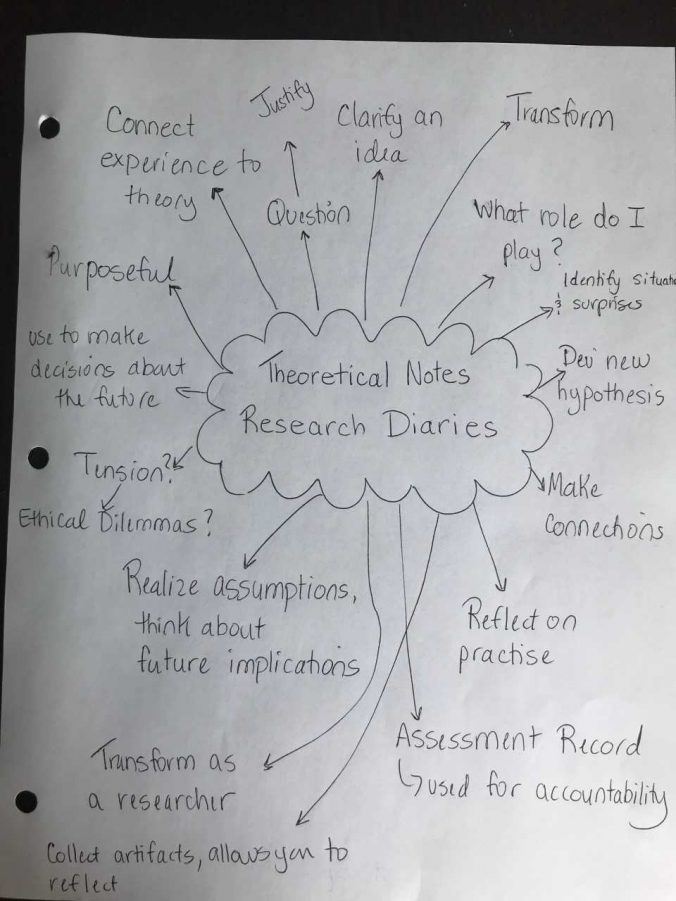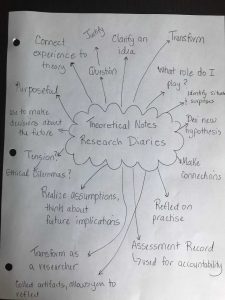Looking at the role that technology plays into gathering research is enabling me to think of our blog in a different light. I have not had any experience with putting together a blog, however approaching it and looking at it as a tool to use to curate resources for future use is a great way to look at using it beyond it just being used as a blog.
Looking at finding a way to visualize or collect vocabulary as we come across new and unfamiliar words and concepts is another way to collect and curate information, ideas and concepts for future use. The collection of such ideas, terms and annotations will help us to collect and really focus in on what our areas of research are. In addition I like to ideas of using Twitter to make connections and curate future contacts that me use and draw from at a later time in our research journey.
We have reflected on the 4 R’s, which help us to think about how we view the research materials and how they influence how we think about the research itself.
In looking at the 4 R’s:
- Research
- Researcher
- Researched
- Reader
I think will be really helpful to review and break down the 4 R’s as we look more critically at our articles, especially when we compare them. It is helpful to look at domains of research, as well as think about questions that may arise.
It was very helpful to see if in the first few research articles that we read for class to see that the researches were really able to break down the methods used, clearly state the purpose and identify the guiding questions, especially with being new to research methodology.
In addition the discussion on the literature review was equally valuable and helpful when thinking about what the purpose, means and implications for the research itself are, which are not always as clearly stated. Being new to this process, this was helpful to review. It was also helpful to think about how we can apply these ideas to our own research projects, and not read into the research articles as literally as we sometimes do. I struggle with this at times as I feel that I am sometimes reading in between the lines with academic writing, trying to decipher what the underlying points are being made.
Jennifer spoke to our class about doing the background research and looking at finding out more about the researcher themselves, what their biographical and academic profile looks like as well as what other publications they may have. In looking at the background information, you can determine a lot more about the purpose or motives of the researcher. It is something that I have not ever really had to do in my academic experiences and yet it makes perfect sense. I look forward to doing more of the background searching and am thinking about the connections and implications that can be made about the researchers, especially in the areas that I am most passionate about, those being Educational Technology and Literacy, Aboriginal and Special Education.



Recent Comments